Sometimes doing is more powerful than reading about, which is why two groups (one in Canada and one in the UK) have organized Ancestor's Trail events during which participants physically re-enact the journey described in Dawkins' book. Hiking distances are carefully measured out so that each step represents a particular number of years back into the past, and different groups of hikers represent various forms of wildlife, joining the trail at pre-specified, biologically accurate rendezvous points. Such events are affirmations not only of evolution but also one's belief in the process, and, of course, offer an opportunity to marvel at the existence of all things great and small.
The reason I happen to know all of this is that I recently participated in an Ancestor's Trail (AT) event being held in the Quantock Hills region of Somerset, UK. This year's event was the 3rd AT there, and the largest yet; participants included not only the pilgrims themselves but also musicians, conservationists, scientific researchers, authors, artists, and even Richard Dawkins himself:
The event kicked off on a Saturday afternoon with an introduction by its organizer, Chris Jenord, who soon introduced the first two speakers: Peter Exley, of the Royal Society for the Protection of Birds, and Kevin Cox, chairman of World Land Trust Trading Ltd. Both guests discussed conservation efforts; Exley focused mainly on the RSPB's mission to save albatrosses, while Cox spoke more broadly about work being done to preserve vital habitat.
Sadly, Sasha and I did not arrive until the coffee break that followed, because, yet again, we were stuck in horrible traffic. We'd left home an hour early, "just in case," and somehow managed to be two hours late. The only comfort in all this is that our lectures were not until Monday, so at least we weren't going to be late to our own shows. Luckily, we did at least get there in time to hear from Alex Taylor, a scientist at the Medical Research Council Laboratory in Cambridge who discussed his work on XNA, and Alom Shana, author of the Young Atheists Handbook.
Perhaps more importantly (no offense to any of the other speakers), we arrived well in advance of Dawkins' keynote speech. I've previously bumped into Dawkins at behavior conferences (sometimes literally), and, of course, I've read some of his work, but I'd never previously had the chance to hear him talk. He delivered an interesting and sometimes humorous lecture, after which he mingled with the audience and autographed books. Also, he danced:
I have video footage of this, as well, but I'll hold that back until I need to use it for blackmailing purposes. Dawkins and all the other dancers in the photo are shown moving to the rhythms of Soul Cake, a band that has also participated in previous AT events.
After the concert, Sasha and I retired to our dorm room at Kilve Court for what was undoubtedly one of the worst nights of sleep I've ever had. I woke up every time someone else entered/exited the hall, a bedroom, or the bathroom. I also woke up each time Sasha rolled over above me and caused the bed slats to creak ominously; I was convinced that he would come crashing down on top of me at some point. I then nearly had a heart attack at 7 AM (and then again at 7:30 and 8:00) when an alarm went off to wake us up for breakfast. The bell was positioned on the wall directly above Sasha's head, so I'm sure he had an even ruder awakening than I did.
The particularly frustrating thing was that we were not getting up for breakfast, but instead sleeping in (or trying to, anyway) and going to have brunch at a nearby pub. We chose this plan of action because we did not want to walk the entire Ancestor's Trail, but instead join up at the "Jellyfish" rendezvous point; while I would have enjoyed participating in the entire pilgrimage, my back would not have shared this attitude.
Once we were both awake, we made our way to the Hood Arms, where we had a nice pot of tea in front of the fireplace. We had arrived at 11:15, but the pub didn't begin lunch until 12, so we had a bit of time to kill. We browsed the pub's extensive collection of West Country-themed magazines and explored the cheerful back garden before placing our order and sitting down to our meal.
(A reminder of Laddie, my family's late Scottish terrier.)
(Dovecote in the Hood Arms' garden. None of the residents were at home. That was a shame because I would have liked to have seen them; I was told that they are Capuchin doves, which have a cool little ruff around their heads.)
Sasha and I chose the Hood Arms because it was the only pub in town and we didn't feel like driving elsewhere. As it turns out, it was a great place to eat. I had a delicious leek-and-potato soup and a rocket salad with scallops, while Sasha had a lamb steak, mashed potatoes, and veggies; he followed this with a luscious ginger cake. The waitress was even happy to comply with my strange request of a cup of tea with the tea bag on the side (ordered so that I could drink the herbal tea I'd brought to Kilve Court in the hopes that there would be a communal kettle somewhere).
Once we left the pub, Sasha and I explored the Kilve Court facilities and briefly ran through our lectures to make sure that everything worked smoothly. Then it was time to lace up our hiking boots and get a cab ride over to Bicknoller to begin our jellyfish journey. Much to my weak-stomached dismay, Bicknoller was the sort of town that is accessed via roads so narrow you swear they must actually be someone's driveway. Americans like myself can't even begin to conceive of roads this small. Luckily, our taxi driver was not only personable, but also very adept at navigating the twists and turns. She dropped us off in front of Bicknoller's picturesque church, which was one of the landmarks mentioned in the instructions for following the jellyfish trail and linking up with the rest of the AT pilgrims.
(The church was surrounded by trees, so it was hard to get an all-inclusive shot of the building.)
The trail's organizers did an excellent job creating specific instructions for navigating towards each of the trail's rendezvous points; we had downloaded the PDF onto my phone and were using both the text instructions and accompanying photographs to figure out where we were going. Unfortunately, the first 30 minutes of our walk took us directly uphill, since we had to scale the Quantock Hills in order to then walk along their backbone. We made the effort more bearable by periodically stopping to look at wildlife.
(Woods! The sea is great and all, but I still miss woods...)
(A view back down towards Bicknoller.)
(The heather and the gorse were magnificent.)
(In addition to kestrels and peregrines, there were also domestic species such as cows and sheep.)
Sasha and I reached the rendezvous point a bit early, leaving us just enough time to catch our breath, have a snack, take a few photos, and then begin to wonder whether or not we'd actually found the right spot. It didn't take long before the other pilgrims arrived, however, and we were greeted with a big cheer. Chris informed us that things had been going well, save for a bit of a mix-up with the port-a-potty. It's probably best for all involved that my bladder wasn't around for that.
The entire jellyfish leg was approximately 5.5 miles long, which probably involved about a mile up the hill from Bicknoller, 3 miles through the hills, and then another 1-1.5 miles from Kilve down to the beach. We had ample opportunity to take in the purple, heather-covered hills, the estuary off in the distance, and then, finally, the dramatic and rocky shoreline.
(As you can see from the lighting here, the clouds were gathering as we walked.)
Once we reached Kilve, we were met by a local brass band called (I think) Big Noise. They provided the soundtrack for the final leg of our journey from Kilve's main road to the beach, where we were treated to a lengthier music performance and the appearance of Helena Biggs, a model/dancer/fitness instructor who acts as a canvas for the beautiful and elaborate body art of Victoria Gugenheim. This was Gugenheim's second display for the AT, and the only one to be exhibited al fresco, under the (cloud-obscured) light of day. Unfortunately, Biggs' appearance coincided with the beginning of the evening's steady rain showers, and her entire dance performance had to be conducted in the wind and rain. Brr.
(Tempestuous weather over Kilve Beach.)
(Helena Biggs displays the body art of Victoria Gugenheim. The design included, among other things, DNA and the tree of life suggested by Darwin.)
We then headed back to Kilve Court via the Kilve Cricket Club, where we had cups of tea and warm snacks. I made sure to stop and photograph one of the most fantastic architectural accomplishments I have ever seen:
(A dragon! On the chimney!)
Because Sasha and I joined the pilgrimage relatively late in the day, we missed some of the musical acts that had been distributed along the trail. However, there were several additional performances scheduled for that evening. My favorite was a set by Jonny Berliner, a science singer/songwriter who covers topics as diverse as evolution, physics, and the unfortunate death of Archimedes. His music was both funny and informative, and I promptly bought both of his albums so that I can feature his tunes on my radio show.
(Jonny Berliner, just about to begin a performance of his Christmas power ballad about Michael Faraday.)
Happily, Sasha's and my second night of sleep was much more restful than the first, and so we arose on Monday morning feeling fairly energetic. This was particularly good news since he and I were scheduled to give the final two lectures of the event. Sasha started the morning with "Unintelligent Design," and I finished up with "Humans as a Selection Pressure." At first, it looked as though we'd be speaking to only a handful of people, but the room filled up just before Sasha kicked things off. I noticed a few people nodding off as we talked, but that's probably to be expected at 10 AM the day after a 13-mile hike; also, it's not any different from what we see when lecturing in front of students, so neither of us was particularly upset by this.
After our talks, Chris gave some lovely closing comments summarizing the weekend's events and describing what he saw as the major accomplishments of the gathering. One of these was "friendship," and, indeed, many participants came up to Sasha and me after our talks in order to initiate friendly and complimentary conversations about our topics; many pilgrims have also made contact via e-mail, Facebook, and Google, emphasizing that the Ancestor's Trail was an experience with effects lasting well beyond its 3-day duration.
Chris hopes that the pilgrimage will occur again next year, perhaps growing yet again to include even more people. Those who are interested should keep an eye on the official website in order to find out details on scheduling, funding, and participation.
---
More of my photos from the event are posted on Flickr.
More discussions of the intersection of humans and nature can be found on my science blog and its accompanying Facebook page.
And, finally, my main professional webpage is here.

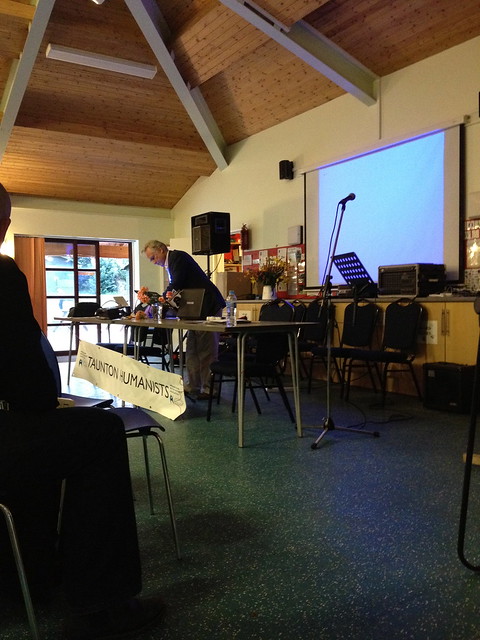

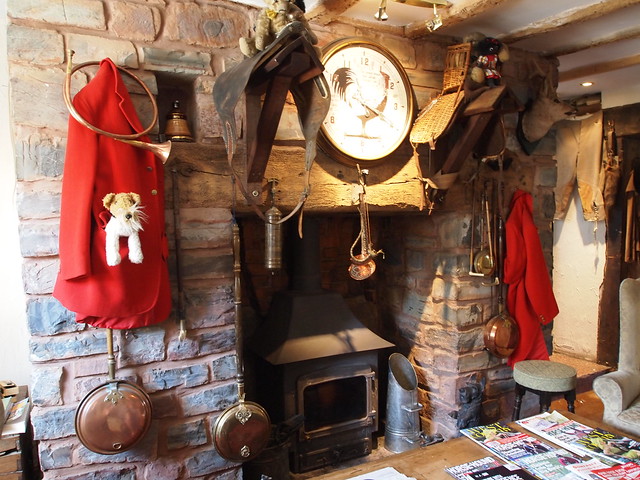

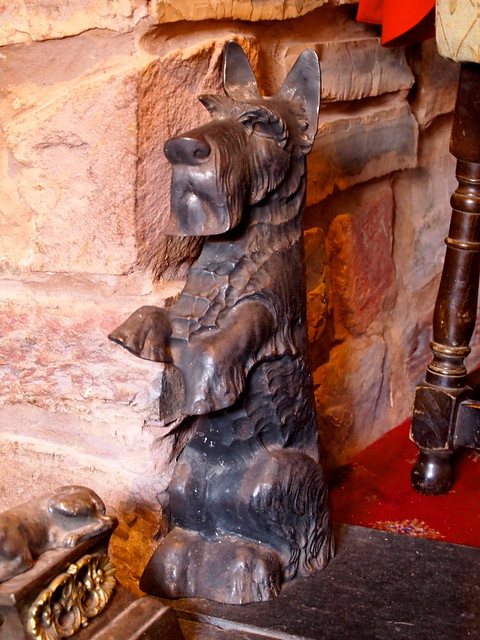
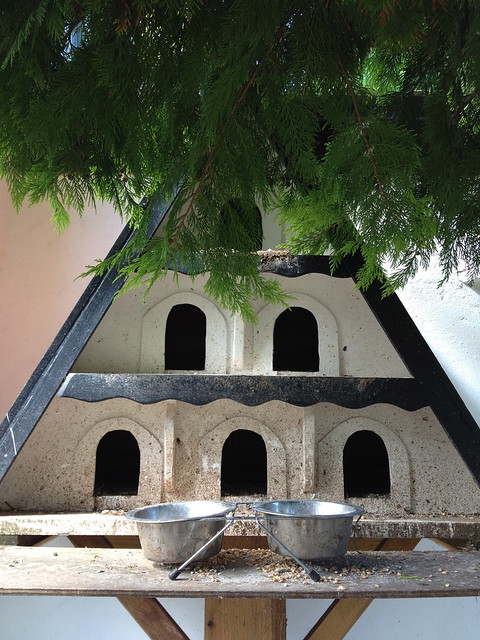


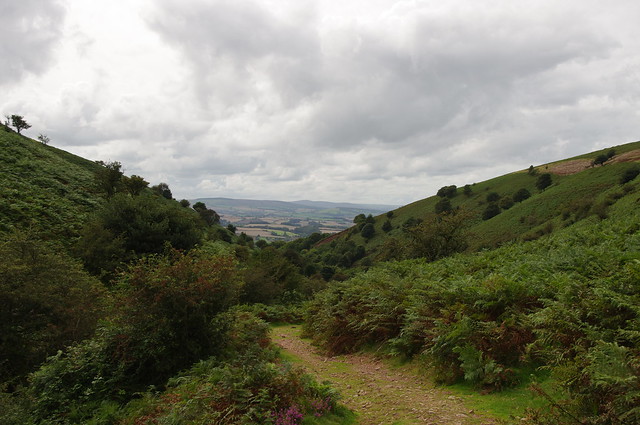
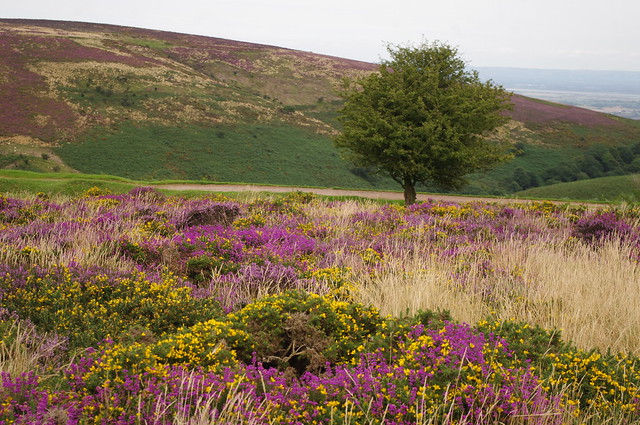
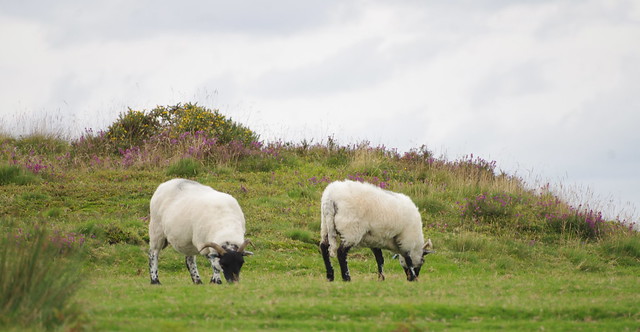


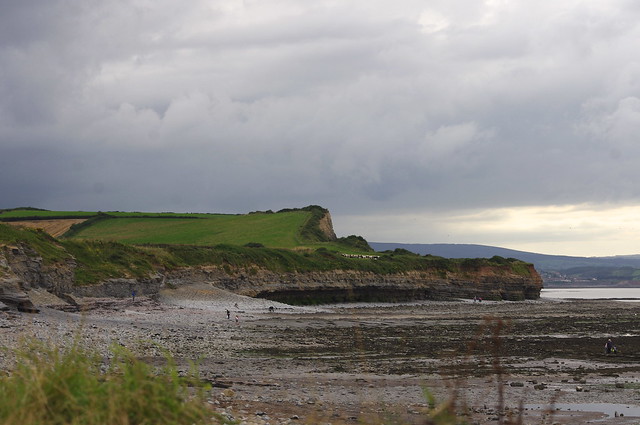


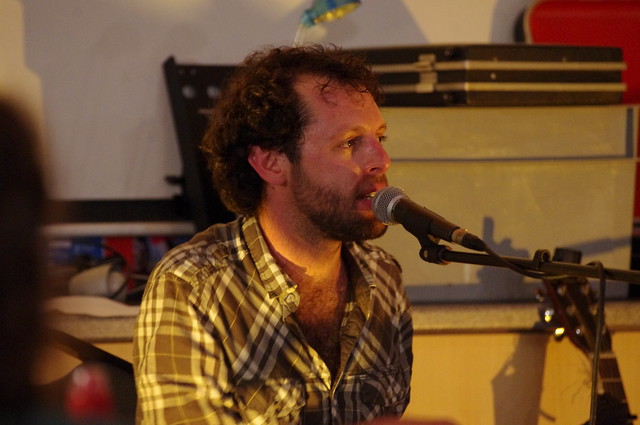
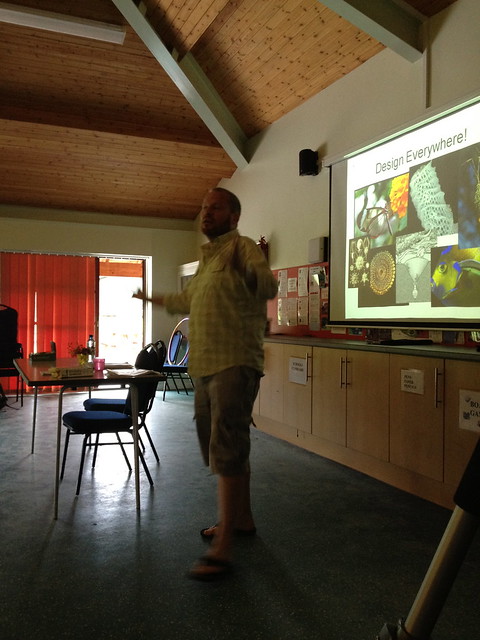
Caitlin, what a wonderful synopsis of the Ancestor's Trail, it sums it up beautifully (warts and all, I too was underneath one of those ghastly buzzers, practically jumped out of my skin!). One thing I would like to make clear is that there are currently only two Ancestor's Trails, the other in Mississauga, Ontario is interestingly an urban experience practically in the centre of Toronto following a ribbon nature reserve. With the vast spaces of Canada available, something we can only dream about in our crowded little island, where we yearn for open space, it just shows how adaptable the AT model is.
ReplyDeleteAT UK is entirely Chris Jenord's concept born from his love of nature and science. The event has grown exponentially over three brief years and practically everything we experienced over the weekend came from his fertile imagination. Naturally, the idea of the Ancestor's Trail appearing at other locations throughout the world is thrilling and the idea of taking it to Australia has already been mooted. How about one in the Plains, Ohio, then your parents could attend. Kind regards, Simon
Hi Caitlin, I wish I could have been there to enjoy this event. Thanks so much for capturing it in writing for us to enjoy vicariously.
ReplyDeleteThe Ancestor's Tale has been my all-time favourite book... I bought 50 copies of the original full colour edition to donate to area schools and libraries. Thanks to Chris' intuitive initiative on transforming this reference text into an exciting activity, and his generosity in sharing his work, we are trying to foster local interest in the understanding of evolution.
Unless we can comprehend our place in this web of life, we are unlikely to regard ourselves as a peripheral species which is destroying the delicate balance of ecosystems that ultimately will decimate more than just ourselves. We live in a beautiful time of knowledge but will it be enough to avert disaster? Thanks to people like Chris and Simon, and others like yourself and Richard Dawkins, no longer can we claim ignorance.
This comment has been removed by the author.
ReplyDeleteHi Caitlin,
ReplyDeleteI don't think we spoke on the Trail, but I was there too and I was wondering if I could use one or two of your photos for my own blog (with credit and links of course).
Could you let me know if that would be OK with you?
Many thanks,
Lucy.